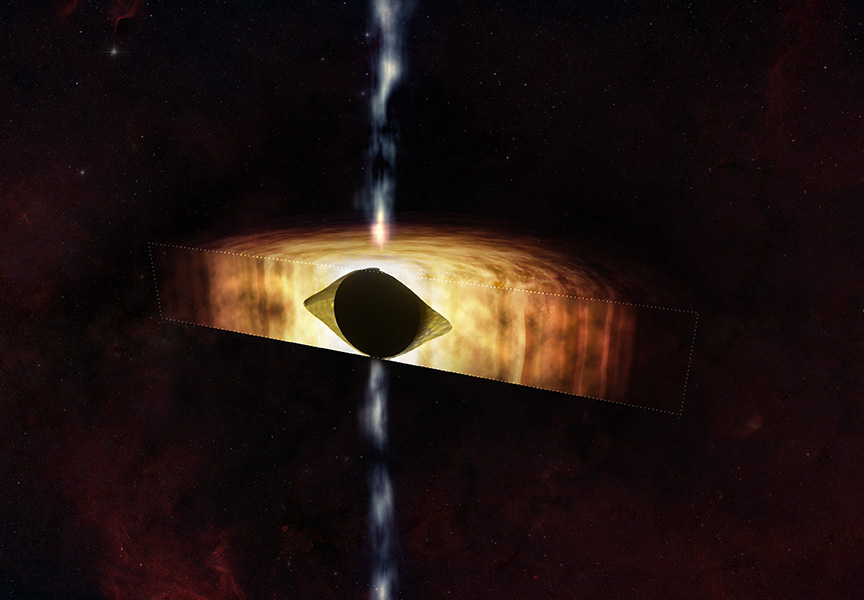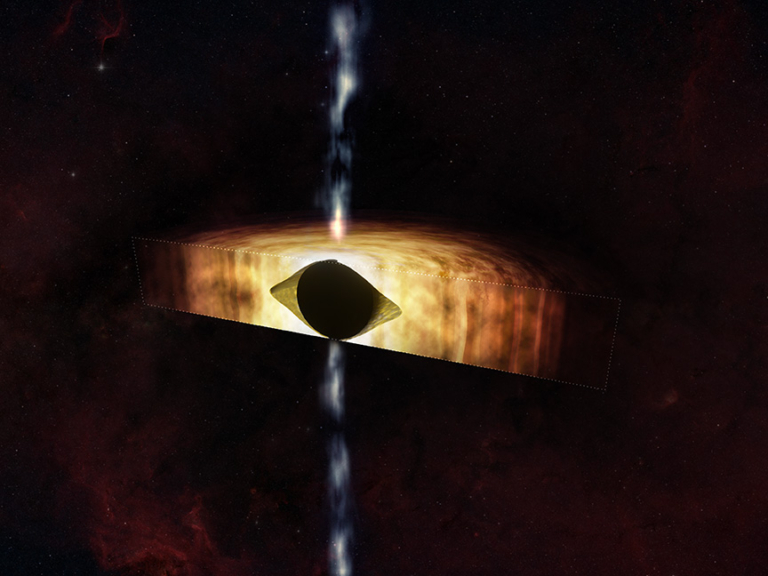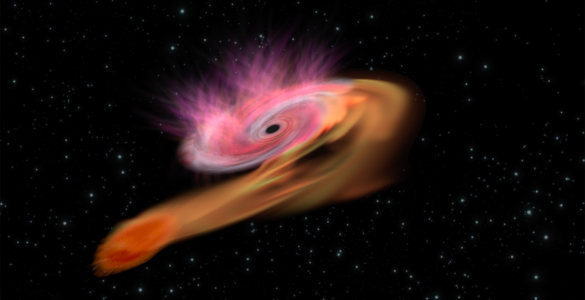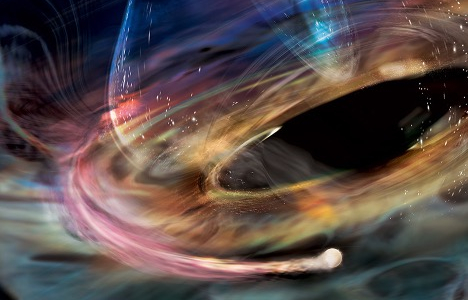The supermassive black hole in the center of the Milky Way is spinning so quickly it is warping the spacetime surrounding it into a shape that can look like a football, according to a new study using data from NASA’s Chandra X-ray Observatory and the National Science Foundation’s Karl G. Jansky Very Large Array (VLA).
Astronomers call this giant black hole Sagittarius A* (Sgr A* for short), which is located about 26,000 light-years away from Earth in the center of our galaxy.
Black holes have two fundamental properties: their mass (how much they weigh) and their spin (how quickly they rotate). Determining either of these two values tells scientists a great deal about any black hole and how it behaves.
A team of astronomers have unveiled a new method for determining the rotational speed of the enigmatic black hole, Sgr A*. By combining X-ray and radio data, the team observed the movement of surrounding material and deduced the angular velocity of Sgr A*. Astonishingly, their findings revealed that Sgr A* spins at a rate reaching approximately 60% of the maximum possible value. This boundary is determined by the fundamental constraint that nothing can travel faster than the speed of light. The team’s discovery challenges previous estimates made by astronomers, which spanned from Sgr A* being stationary to rotating at nearly the fastest rate conceivable. This groundbreaking research sheds new light on the dynamic nature of black holes and opens up exciting avenues for further exploration into their mysteries.
The paper describing these results led by Ruth Daly is published in the January 2024 issue of the Monthly Notices of the Royal Astronomical Society and appears online at https://ui.adsabs.harvard.edu/abs/2024MNRAS.527..428D/abstract.
“Our work may help settle the question of how fast our galaxy’s supermassive black hole is spinning,” said Ruth Daly of Penn State University, who is the lead author on the new study. “Our results indicate that Sgr A* is spinning very rapidly, which is interesting and has far reaching implications..” This release was originally shared by NASA’s Chandra X-ray Observatory. Read the full release HERE.
About Chandra
NASA’s Marshall Space Flight Center manages the Chandra program. The Smithsonian Astrophysical Observatory’s Chandra X-ray Center controls science operations from Cambridge, Massachusetts, and flight operations from Burlington, Massachusetts.
About NRAO
The National Radio Astronomy Observatory (NRAO) is a facility of the National Science Foundation, operated under a cooperative agreement by Associated Universities, Inc.
NRAO Media Contact
Corrina C. Jaramillo Feldman
Public Information Officer – New Mexico
VLA, VLBA, ngVLA
Tel: +1 505-366-7267
cfeldman@nrao.edu

















